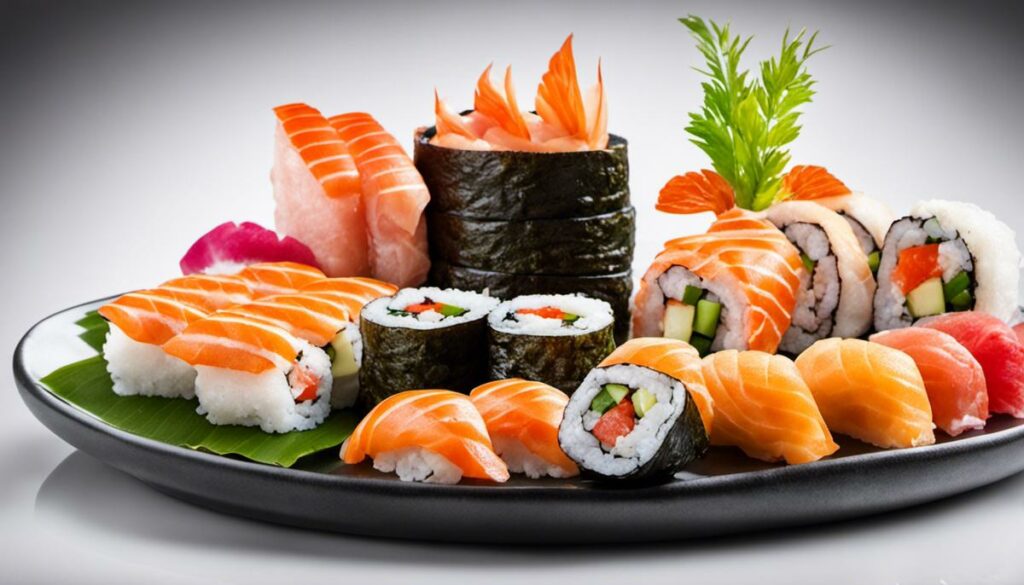The world of sushi is a fascinating journey through art, culture and gastronomy. Sushi, originally from Japan, has conquered the world with its simplicity, beauty and variety of flavors. In the midst of this diverse culinary universe is a special element that plays a particularly important role – the fish roe. By using fish roe, sushi reaches a new dimension in terms of taste, texture and visual appeal. Understanding how these fine caviar kernels enrich the sushi experience and the health benefits they can provide is a journey in itself.
History and Meaning of Sushi
Elegant rolling tools, delicate types of fish, and distinct flavors, sushi has become a culinary darling in today’s world. But how did this simple yet powerful dish manage to secure its place in global cuisine? The journey is as vibrant and colorful as the exquisite ingredients themselves.
Sushi, which was once a nondescript street food, is now the essence of fine dining in the world’s hottest restaurants. Originally conceived as a quick meal for vendors at Tokyo’s fish markets, it has now evolved far beyond Japan’s borders, embarking on an impressive trek around the globe.
The apparent simplicity of sushi belies the deep complexity behind it. Every element, from rice to high-quality sashimi, plays a crucial role. The chef uses his skills to accentuate the natural flavor notes and create a harmonious flavor. Nippon Sushi, the authentic Japanese sushi, is a true masterpiece of gastronomy.
Adaptability has proven to be one of the keys to sushi’s global dominance. In every culture where it takes root, sushi takes on its own local twist. Be it the concentrated rolls of American sushi with extra sauces, or the baked sushi in Brazilian culture; there are countless variations of this dish that make sushi tempting for any culinary palette.
The aesthetic of sushi has delivered a lot of aesthetics to a generation of Instagram users and food photographers. Not only does each reel look great, but it also offers a flavor that dances in your mouth. It is this appeal to the senses – whether visually through the colorful ingredients, groping through the textures, or tastefully through the different flavors – that has made sushi a global sensation.
As the sushi continues its global journey, the spirit of traditional Japanese sushi remains intact in every piece. It is not only a dish to be enjoyed, but also symbolizes cultural respect, artistic craftsmanship and fine refinement. These are the qualities that have secured sushi its well-deserved place in global cuisine.
If there’s one conclusion to this delicious journey of sushi, it may be this: sushi had the courage to bring its delicate texture and colorful fillings to the world, willingly finding its niche in the diversity of global culinary history. Thus, it remains a favorite dish for many and an eternal symbol of the fusion of culinary cultures.
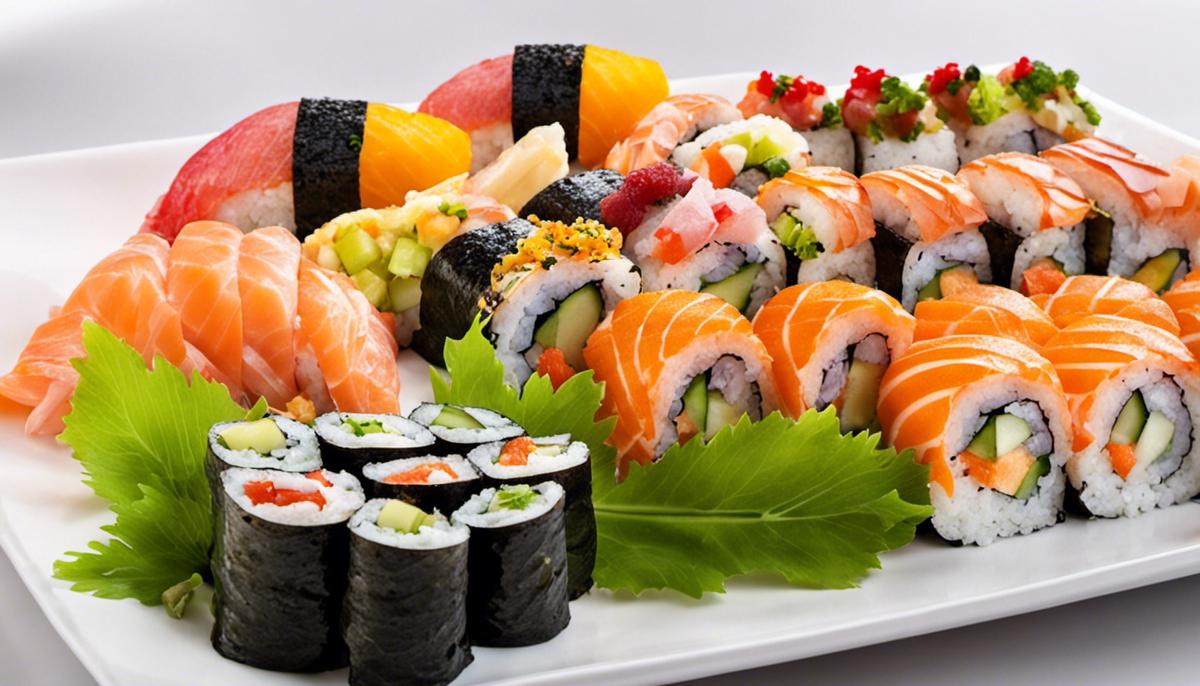
The Art of Sushi Making
“Art is beauty; Art is ability; Art is devotion to a process. For many, including our readers, sushi is just that: a true art form. But what is it that makes the production and presentation of sushi so unique and remarkable?
One can argue that perfection is in the details. Sushi masters spend years, if not decades, learning and refining the complex skills required to turn every piece of sushi into a culinary gem. From the selection and preparation of the simplest ingredient – the rice – to the precise handling and arrangement of the fish slices, every gesture, every cut, every movement has a meaning. All this, combined with aesthetics and symmetry, results in an art form that appeals to all the senses.
In addition, the presentation of sushi is just as important as how it is made. The artistic arrangement of the pieces on a sushi tray is a performance in itself. It is not only about the eye, but also about the play of colors and textures that takes place on the tongue, until the critical moment when the beauty of pictorial appearance is discovered through the pleasure of taste.
Respect for tradition is also a distinctive aspect of the art of sushi. Although sushi is constantly changing and adapting, the connection to Japanese tradition, rituals and the philosophy of respect for the product remains an integral part of the art of sushi. The sushi master’s actions are often associated with ceremonies and rites of Japanese Shintoism, symbolizing the worship of nature and the food it produces.
In short, making the production and presentation of sushi an art form requires love, patience, attention to detail, and a deep respect for tradition and culture. It is a culinary ballet that beautifully combines aesthetics, taste and tradition, and this is exactly what makes it a unique, multifaceted and fascinating experience.”
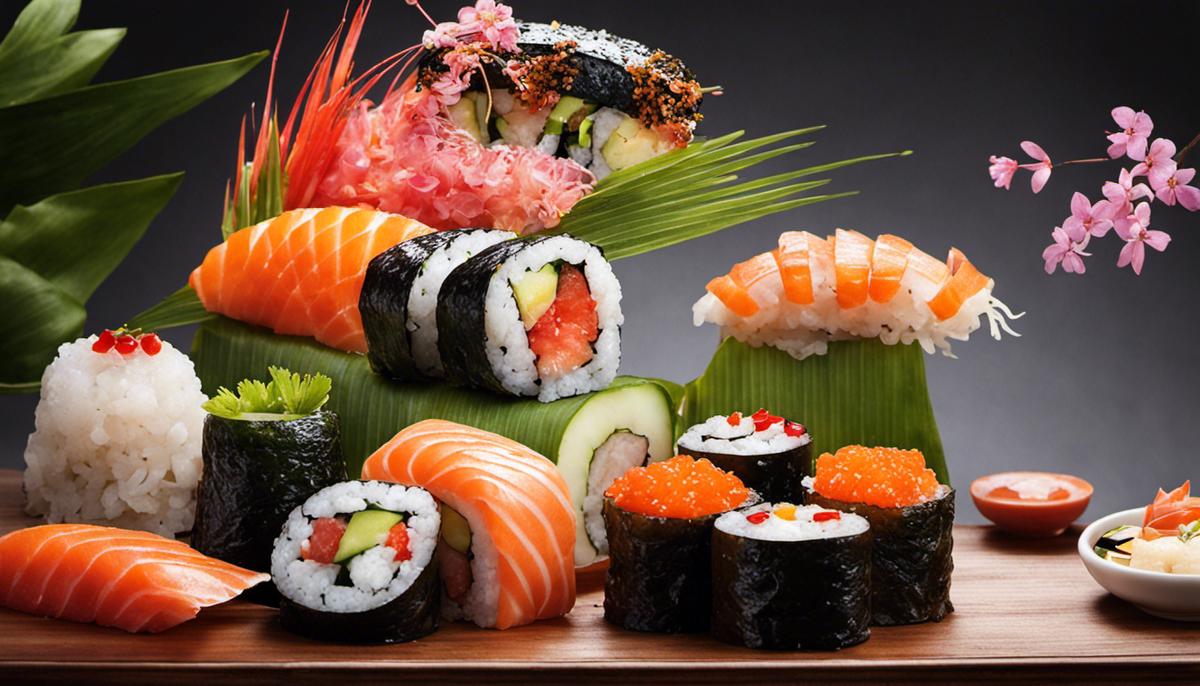
The use of fish roe in sushi
Fish roe, also known as roe, is an indispensable part of the sushi experience and plays an important role in refining both the flavor and texture of this refined dish.
Fish roe exudes a special affair that is often seen as a luxury item, but which has certainly secured its way into everyday sushi rolls in terms of taste.
From the very first bite, fish roe fascinates with its unique crunchy texture and intense taste.
The small pearls literally burst open in the mouth, creating a rich, salty flavor that refreshes the overall experience of sushi and instantly expands its flavor depth.
It’s a play of textures between the tender, dull sashimi, the sticky, mild sushi rice, and the crispy, salty fish roe.
The differences in taste and texture of fish roe can vary significantly depending on the species.
For example, starfish or salmon egg caviar offers a more intense explosion of flavours, while flying fish roe (tobiko) or burbot (masago) provides a more subtle, delicate aroma.
Each variation of fish roe complements the sushi experience in a different way, bringing different dimensions of flavors, textures, and colors into play.
Aside from flavor and texture, fish roe inspires with its visual aesthetics and color.
The sumptuous colors, from bright orange to rich ruby red, can transform a simple piece of sushi into a stunning, artful means of expression.
It is hardly surprising that the use of fish roe extends far beyond the culinary realm and impresses even into the visual arts.
It’s interesting to note that, despite its presence in the refined art of sushi, fish roe is actually a fairly common ingredient in Japanese cuisine.
In Japan, the heart of sushi culture, fish roe can be found in various dishes, from ramen to onigiri.
So it’s clear that these pearls are not only a fascination, but also an integral part of Japanese food culture.
With fish roe, sushi moves far beyond the status of a simple meal and enters the glamorous world of foodie.
It illustrates how a small detail, such as fish roe, can decisively change the taste and texture of a dish and thus contribute to perfection.
It shows that nothing is left to chance in sushi, but that every ingredient is carefully selected and placed to achieve the ultimate taste experience.
This makes it clear that the enjoyment of sushi is much more than just food, it is an art form in itself.
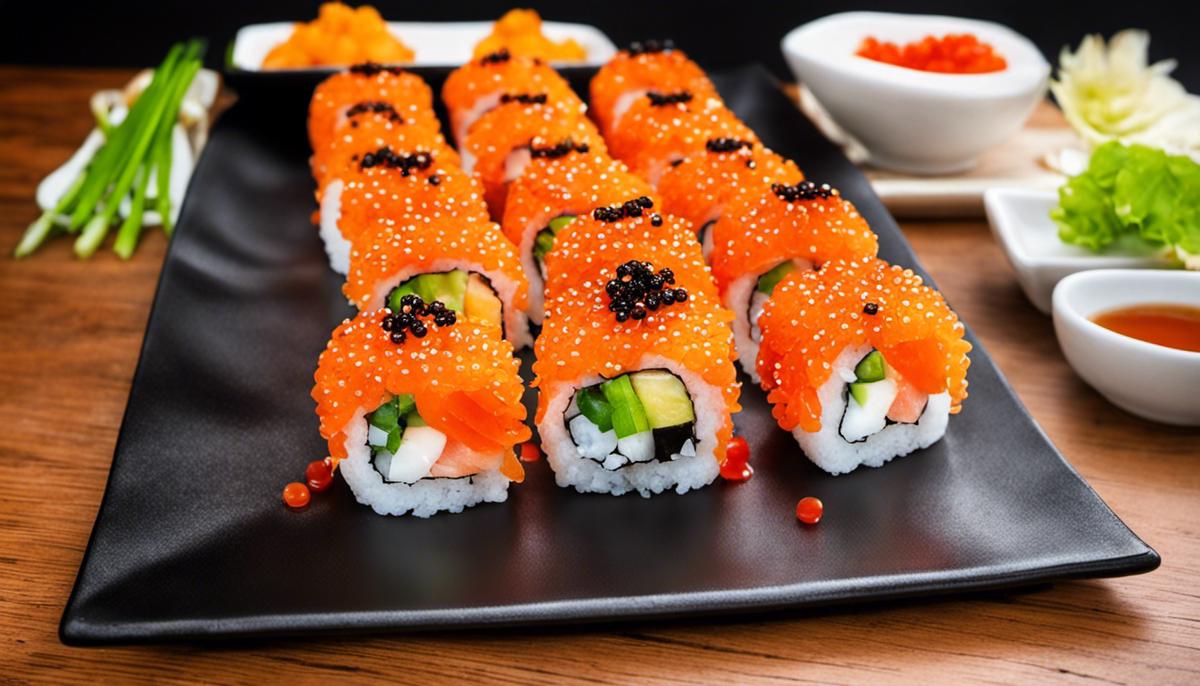
Fish Roe and Health Benefits
Fish roe, or roe, offers health benefits beyond its aesthetic appeal and gustatory delicacy. Rich in omega-3 fatty acids, fish roe provides protection against heart disease and contributes to brain development, making it a desirable ingredient in the diet of any fine-tasting health-conscious person. Did you know that omega-3 fatty acids can also help improve mood and prevent mood swings? Truly a little powerhouse of an ingredient!
In addition to omega-3 fatty acids, fish roe also provides a good portion of protein – an important building block for muscles and essential for a healthy and balanced diet. Protein also helps regulate appetite and provides a longer-lasting feeling of satiety. That speaks for an extra portion of Roe at the next sushi dinner, doesn’t it?
And let’s not forget the rich content of essential vitamins and minerals in fish roe: vitamin B12, which is important for brain health, vitamin D, which is essential for strong bones, and selenium, a powerful antioxidant. So fish roe is not only a treat for the palate, but also for your health!
Fish roe not only provides health benefits, but also does wonders for overall well-being. The joy of seeing an artfully arranged sushi platter, coupled with the knowledge that it contains health-promoting nutrients, is an invaluable experience. It is this symbiosis of beauty and health, of art and nutrition, that makes the sushi experience with fish roe so unique and desirable.
Ultimately, inspired by Japanese culture and philosophy, fish roe offers not only culinary delights, but also health benefits and increased well-being. Sure, there are many ways to enjoy fish roe – from traditional sushi variations to modern culinary experiments, but the main focus should always be on maintaining health. After all, what could be more important than a healthy, happy life? That’s the ultimate luxury!
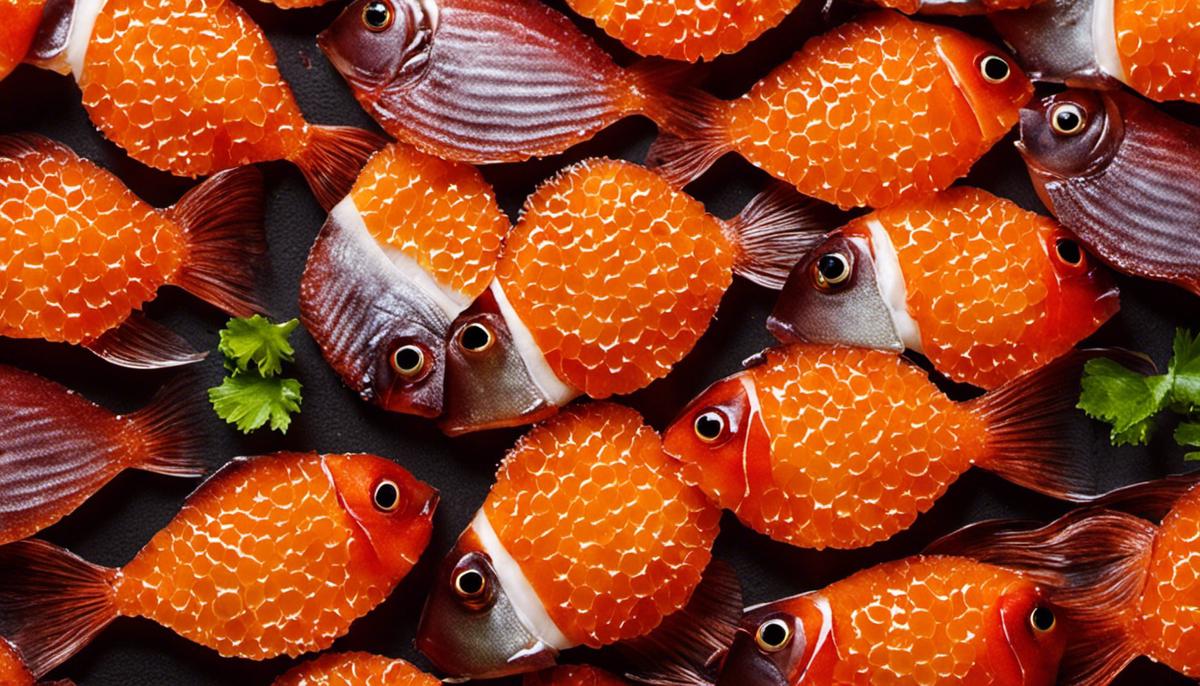
Exploring the deep connection between sushi and fish roe will surely be fascinating for both beginners and experienced sushi lovers. It opens up new perspectives on the wide variety of flavors and textures found in the simple yet highly complicated world of sushi. It also sheds light on how sushi goes far beyond a simple meal to represent a whole world of cultural phenomena, culinary aesthetics, and health-promoting benefits. Thus, it becomes clear that the art of sushi and the use of fish roe are an invitation to enrich and expand not only the taste, but also our perception and appreciation of food and culture.
